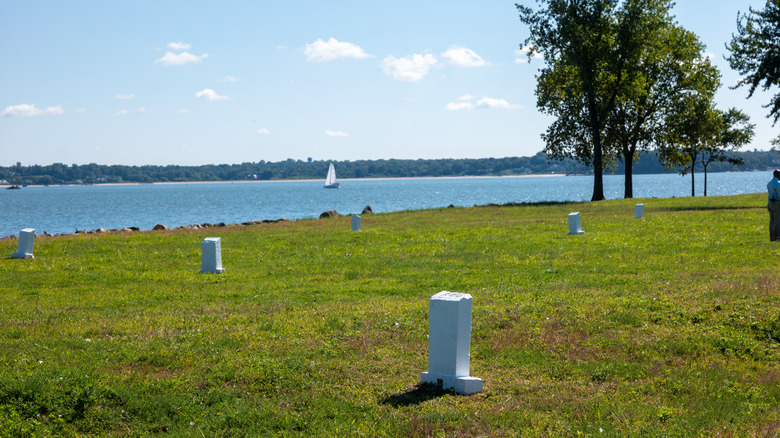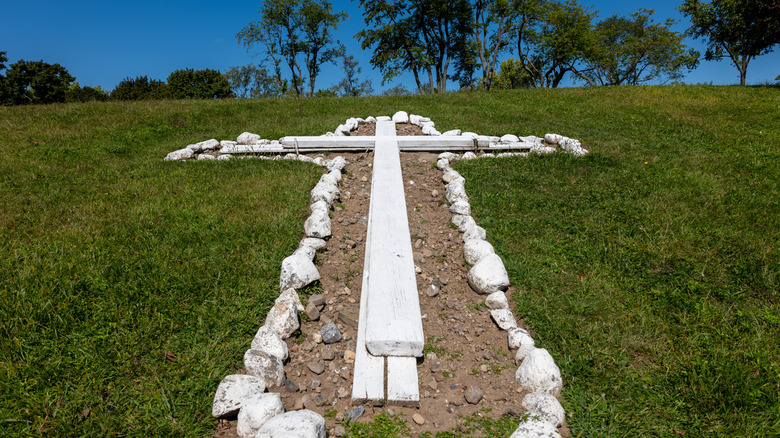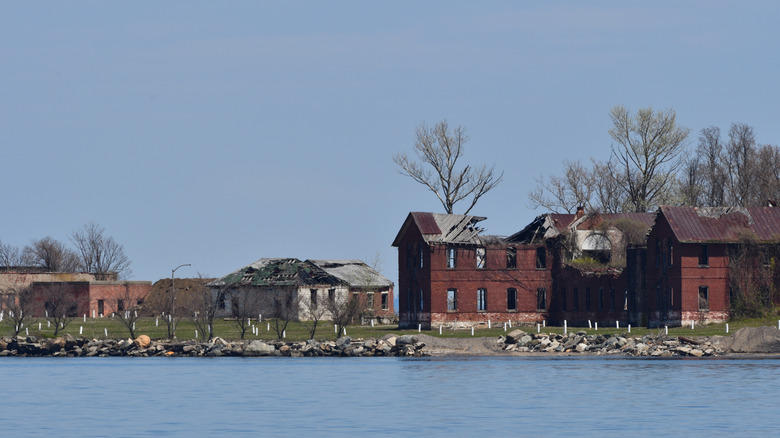Anyone from New York City can tell you that space there is always at a premium, and yet, for over 150 years, there’s been an island similar in size to Roosevelt Island, the quiet escape connected by a scenic tramway, that was kept mostly off-limits. Many may not realize that NYC has many serene, hidden islands, often easy to get to by bus or subway. Hart Island, though, was intentionally isolated — it’s a place that’s tied to many sensitive periods of the city’s history, and much of it was overgrown and neglected up until being transferred to management under the NYC Parks Department in 2021.
A Civil War prison camp, a psychiatric hospital, a quarantine site for yellow fever, and Navy barracks are just some of the roles Hart Island has played, but it’s most famously known as the largest public cemetery in the U.S., with over 1 million buried people, according to a Parks Department press release. The island opened to the public for free scheduled tours in November 2023, giving New Yorkers the chance to connect with the city’s past and out-of-town visitors to have a reflective, engaging experience. In the press release, NYC Parks Commissioner Sue Donoghue said, “We’re thrilled to begin offering free public history tours of Hart Island, allowing New Yorkers an intimate look at the island for the very first time. Our Urban Park Rangers have created informative and reflective programming that highlights the island’s important role in New York City history.”
Hart Island holds the unheard stories of New York
Nicknamed the “Island of Lost Souls,” Hart Island has served as the resting place for the poor, unclaimed, or unknown since 1869. Before then, the island was a prisoner-of-war camp during the Civil War and even served as a gathering place for underground boxing matches. In the 1980s and ’90s, it became one of the biggest mass burial sites of victims of the AIDS epidemic, as funeral homes declined to handle the bodies. Later, many victims of the COVID-19 pandemic were buried here when the city became overwhelmed with bodies. The public cemetery “reflects the lives of people who live on the margins — the homeless, the sickly, the neglected, the forgotten and overworked,” Justin von Bujdoss, its chaplain, told Time.
Hart Island was New York City’s shamefaced secret for so long, its bodies belonging to those unable to afford marked graves or spurned by guardians and institutions. “For decades, Hart Island has been misunderstood and stigmatized,” Sue Donoghue told The New York Times. Opening the island to the public in 2023 marked a meaningful turning point for both visitors and the city, symbolizing a shift away from hiding the past and towards reflecting on it. Tours lead you to an old chapel (one of the few buildings still standing on the island), a monument at the former Civil War barracks, and numerous burial sites, with unadorned white markers to designate mass graves.




